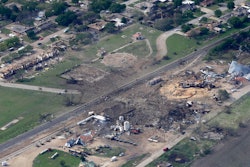New York—Oct. 8, 2013—Minimizing business disruptions caused by emergencies of any kind are becoming standard practice for companies, institutions and government agencies. However, businesses of all sizes need to have a plan to protect staff and assets.
Inherent risk was once a part of doing business, and where possible, it was minimized. New programs introduced by Global Elite Group look at the changing business world in which success and growth are mixed with the unpredictable and hazardous nature of the working environment. There have been headline-making disasters and threats with historic ramifications affecting people and their workplaces. For a business to pick up and start over, after a major event, the process begins with a first step—a risk assessment.
“There isn’t a day that goes by that a company doesn’t face risk and the potential for that risk to completely disrupt business,” stated William McGuire, president and CEO of Global Elite Group (GEG). “Threats come in all shapes and sizes—from weather to terrorism. Understanding what needs to be planned for, keeping employees safe and facing the aftermath, are just some of the areas GEG helps businesses address.”
The risk assessment yields information that can be turned into an emergency response plan. According to Joseph Ascoli, the director of special operations for GEG, “Our team provides guidance on what appropriate actions need to be taken, including a timeline with support staff recommendations.”
Some recommendations, depending on the nature of the emergency, include both evacuation and business continuity strategies. There are regions of the U.S. where business preparations may depend on the location and types of threats that are specific to the area, but that is not always the case, as some parts of the nation can experience intense weather-related activities that have never been seen.
“Flooding is not restricted to areas near an ocean or major waterway. Urban streets and communities experience flash floods with destructive force,” continued Ascoli. Extreme flooding, which can impact structures built to withstand tremendous forces, is driving new standards to be developed, especially after Hurricane Sandy and the Colorado floods.
Some emergencies have advance notice, such as hurricanes, but many others do not. GEG provides the support staff, consulting expertise and off-site communication needs before, during and after an emergency. Additional services were added to assist in the post-emergency phase, which can include long-term security solutions, canine security teams, insurance recovery, as well as other essentials the company needs prior to being fully operational.
Having a business with a foundation to meet future needs includes weathering the volatile nature of external and internal business threats by having a solid business continuity plan in place.













